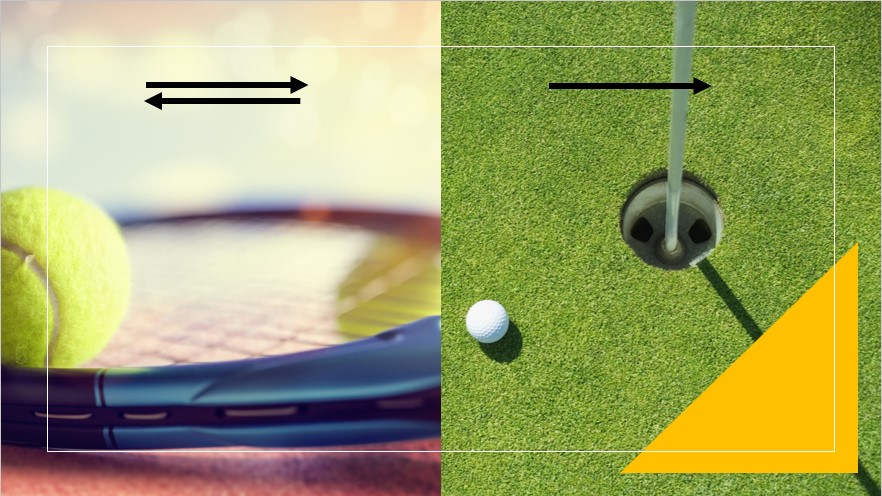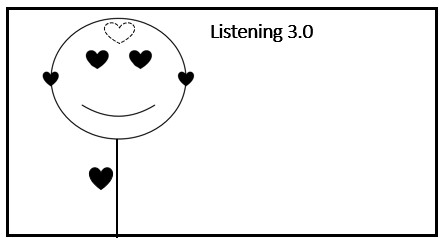Listening Beyond Words: Improve Your Communication Skills with Different Listening Techniques
I remind myself every morning: Nothing I say this day will teach me anything. So if I’m going to learn, I must do it by listening.
Larry King
Listening 1.0
- give your deliberate attention to a sound
Listening 2.0: AKA Active Listening
- remain silent and let the speaker finish first
- nod while the speaker talks
- paraphrase what you heard
Listening 3.0: that’s what I hope this blog explains what it is.
Listening is an essential skill that impacts our communication, relationships, and overall success in life. Listening involves not only hearing the words spoken but also understanding the speaker’s message, emotions, and intentions. To become a great listener, we need to engage all four parts of our being: our eyes, ears, mind, and heart. That’s why I called it Listening 3.0. It’s an evolved form of the other types of listening.
Eyes
Listening with our eyes involves paying attention to the speaker’s body language, facial expressions, and gestures. It’s about noticing the speaker’s non-verbal cues, which convey a wealth of information about their feelings and emotions. For example, a person who is crossing their arms while speaking may be defensive, while a person who is nodding and smiling may be interested in what you have to say.
To assess how strong you are in listening with your eyes, ask yourself:
- Do I pay attention to the speaker’s non-verbal cues?
- Do I maintain eye contact with the speaker?
- Do I avoid distractions that may prevent me from paying attention to the speaker’s body language?
- WFH Note: when you are working from home, pay attention to times when you are multi-tasking while in a meeting with cam on
Strategies to improve listening with your eyes include:
- Maintaining eye contact with the speaker to show interest and engagement.
- Noticing the speaker’s posture, gestures, and facial expressions to understand their emotions and intentions.
- Avoiding distractions like phones or laptops that may take your attention away from the speaker.
- WFH Note: Change Teams or chat status to Do Not Disturb, close other browser tabs, especially your email, and put your cell phone on silent mode
Ears
Listening with our ears involves hearing the speaker’s words and understanding their message. It’s about paying attention to the words spoken, the tone, and the context. For example, if someone says, “I’m fine,” in a monotone voice, it may indicate that they are not fine.
To assess how strong you are in listening with your ears, ask yourself:
- Do I pay attention to the speaker’s tone of voice?
- Do I ask clarifying questions to ensure that I understand the speaker’s message?
- Do I avoid interrupting the speaker?
Strategies to improve listening with your ears include:
- Asking open-ended questions to encourage the speaker to share more information.
- Listening actively without interrupting or finishing the speaker’s sentences.
- Paraphrasing the speaker’s message to show that you understand.
Mind
Listening with our mind involves processing the information received from the speaker and interpreting it. It’s about analyzing the message, identifying key points, and making connections. For example, if someone is describing their experience with anxiety, you may recognize similar experiences in your own life and offer support.
To assess how strong you are in listening with your mind, ask yourself:
- Do I analyze the speaker’s message and identify key points?
- Do I make connections between the speaker’s message and my own experiences?
- Do I avoid judging or assuming the speaker’s intentions?
Strategies to improve listening with your mind include:
- Summarizing the speaker’s message to identify key points.
- Connecting the speaker’s message to your own experiences to better understand their perspective.
- Avoiding judging or assuming the speaker’s intentions.
Heart
Listening with our heart involves empathizing with the speaker and understanding their emotions. It’s about putting yourself in the speaker’s shoes and trying to feel what they are feeling. For example, if someone is sharing a difficult experience, you may feel compassion and offer support.
To assess how strong you are in listening with your heart, ask yourself:
- Do I empathize with the speaker’s emotions?
- Do I acknowledge and validate the speaker’s feelings?
- Do I avoid giving unsolicited advice or trying to fix the speaker’s problems?
Strategies to improve listening with your heart include:
- Acknowledging the speaker’s emotions and offering empathy and support.
- Validating the speaker’s feelings to show that you understand and care.
- Avoiding giving unsolicited advice or trying to fix the speaker’s problems.
Listener Types

I hope through the above lines, I encouraged you to have a more comprehensive perspective of listening. Now that we have a better understanding of listening from different angles, I’d like to encourage you to also explore the various types of listening. Next time you listen to your audience, identify in which of the following modes you might be.
- Methodical
- Empathetic
- Evaluative
- Goal-oriented
They all have unique purposes and benefits. It’s essential to recognize which type of listener you are in each scenario, as this can help you become more aware of your listening strengths and areas for improvement.
- Are you someone who pays attention to details and seeks to understand the underlying message (methodical listener)?
- Do you prioritize building relationships and creating connections with others (empathetic listener)? Are you someone who evaluates information and makes judgments (evaluative listener)?
- Or do you listen with a specific goal or outcome in mind (goal-oriented listener)?
- Is your listening type accommodating the needs of your speaker?
In conclusion, understanding and practicing different types of listening can help you become a more effective communicator. Take some time to reflect on which type of listener you are currently, who you want to be, and what type of listener you should be in different situations. Identify your listening strengths and areas for improvement and work towards enhancing your listening skills. Remember, the next time you listen to someone, picture playing a game of tennis, you are not in a round of golf. Engage with them, respond to their cues, and stay present in the moment. By improving your listening skills, you can build better relationships, avoid misunderstandings, and achieve greater success in both your personal and professional life.






